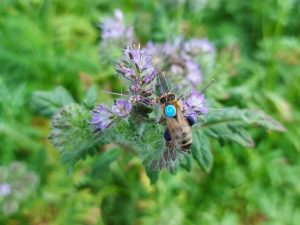THE LATEST
German-built simulations offer hope for honeybee conservation

Scientists in Germany, funded by the Federal Ministry of Food and Agriculture, have developed a new approach to studying the effects of pesticides on honeybee colonies, providing promising strategies for their protection. By integrating artificial intelligence (AI) with advanced supercomputer modeling, researchers have developed a system that connects the exposure of individual bees to neonicotinoid pesticides with the overall health of their colonies.
The research, published in Environmental Science & Technology, involved exposing honeybees to sublethal doses of neonicotinoids and monitoring their foraging behavior using AI-based camera technology. The collected data was analyzed with BEEHAVE, a supercomputer simulation designed to investigate stress effects on honeybee colony dynamics. The findings revealed that even low levels of pesticide exposure led to decreased efficiency in pollen foraging, both individually and collectively within the colony.
A particularly encouraging aspect of this study is the reproducibility of the results. The team successfully replicated findings from a 2019 field experiment, demonstrating the robustness of their methodology. This consistency is significant, given the inherent variability in honeybee behavior that often complicates the detection of statistically significant effects.
The implications of this research are extensive. By establishing a clear connection between individual bee behavior and colony health, the study provides a valuable tool for assessing the risks associated with pesticide use. This approach could inform more bee-friendly agricultural practices and guide policy decisions to conserve these essential pollinators.
As honeybees play a crucial role in pollinating crops and maintaining biodiversity, developing such predictive models represents a significant advancement. By harnessing the power of AI and simulation, scientists are better equipped to protect honeybee populations and ensure their ongoing contribution to ecosystems and agriculture.

